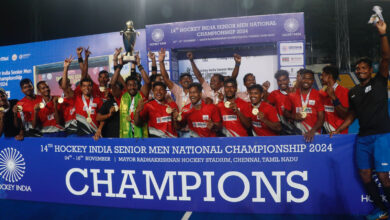Skills aside, lack of game time a problem as Harmanpreet Kaur and Co search for ODI answers | Cricket News

While the two Test match wins brought a certain sense of joy to the Indian women’s cricket team, concerns remain in the formats that truly matter. Red-ball cricket remains rare in the women’s game, and while the wins against strong teams were memorable, white-ball cricket is where the context lies.Harmanpreet Kaur and Co have plenty of work to do with two subcontinental World Cups coming up in the next 18 months. The three ODIs against Australia laid bare the concerns that new head coach Amol Muzumdar and Harmanpreet must address. Alyssa Healy-led visitors won two of the three matches comfortable margins while India were left to rue their missed chances in a three-run defeat in the second ODI. The 3-0 result saw Australia maintain their unbeaten bilateral run against India, with 9 wins out of 9.
Throughout the ODI series against Australia, fielding was a common concern surrounding India. It was less than ideal in the series-opener as India struggled to defend 282, their highest total in this format against Aussies. The third ODI too saw India drop a crucial catch of Phoebe Litchfield who went on to score a century. But it was the second ODI where fielding was alarmingly poor as India dropped at least seven catches in a low-scoring affair.
It is an age-old problem for India, and one that continues to linger despite captains and managements pointing it out as an area of concern repeatedly. There is certainly an awareness that fielding and fitness have to improve but the proof remains in the pudding.
“We’ve not played to our highest potential, especially in the fielding department, I think a lot of work remains to be done. We have been working on it, but it’s not of the standard expected for the Indian women’s team. I can assure you that we will work on it and come back stronger,” Jemimah said after the third match, echoing the thoughts of Harmanpreet.
Batting experiments
But while fielding remains a concern, India looked well off the pace when it comes to batting in the last two matches. The 282 in the first ODI was a solid team effort, with Jemimah – the most consent batter among Indians – leading the way despite being ill and fatigued.
Promoted to No 3, Richa Ghosh’s 96 was a bright spot in the second match that nearly got India home. It seems Muzumdar is set on trying out the keeper-bat in that position. “Richa is our No.3, we believe that she can be a good top-order player. We believe in her talent and you’ve seen what kind of shots she can play. And if she can use the first 10 overs and then play according to the situation, that is the best spot for her. At least now we feel that Richa at No.3 will be a very good choice,” the coach had said.
Mumbai: Indian batter Richa Ghosh reacts after being dismissed during the second ODI match between India Women and Australia Women, at the Wankhede Stadium in Mumbai, Saturday, Dec. 30, 2023. (PTI Photo/Shashank Parade)
But the problem with this idea is that in a team of top-heavy batters, Richa has seemed like the natural choice for a finisher for a while now. While Jemimah seems a solid choice for either No.3 or No.5, promoting Richa means India are left with fewer options for the finisher’s role. Deepti Sharma struggled in the second match, and horically, hasn’t set the stage on fire lower down the order when there is scoreboard pressure. And Harmanpreet’s three single-digit scores in the series added more pressure on an already underperforming department.
While there is merit in Richa being tried out in the top order India – despite the feeling of having a deep lineup – appear well short in the department.Add to that, Shafali Verma’s technical issues seem to be catching up to her as she was dropped after the first ODI.
Shreyanka emerges a positive
Not defending 282 and conceding 338 in two of the three matches is not a good look for the bowling department, but there were some positives here for India. Shreyanka Patil, making her debut in the second match, returned impressive figures in both her outings. Deepti Sharma was sensational with the ball in the second game too when she became the first Indian woman to pick up a five-for against Australia in this format. And Pooja Vastrakar’s early spells deserved better returns, with some help from the fielders.
But death bowling is an area to work on as India conceded plenty of runs in the last five overs. “That’s one area where I feel we need to have a look in and improve ourselves going forward, is the death overs, whether it is batting or bowling. We’ll be working hard on that,” Muzumdar noted.
Lack of game-time
While all three departments need working on evidently, off the field too there are worries. India played a total of five ODIs in 2023, two of those in the last week against Australia. After the third ODI on Tuesday, there are no more 50-over matches on India’s Future Tours Program till December this year. India were supposed to host South Africa and New Zealand in the backend of 2023 but those two series didn’t take place due to their last-minute call to send a team to the Asian Games in Hangzhou. As things stand, these two series haven’t been rescheduled.
What that means is that, officially, the Indian players only have the Women’s Premier League on their agenda for high-level competition till the T20 World Cup in Bangladesh later this year. And very few ODIs lined up, 18 months out of the 2025 World Cup they are hosting. Muzumdar spoke about having camps in his first press conference but they can help only so much in the squad’s quest to level up. The lack of competitive international assignments is a serious area of concern that the management and Board must address because only more matches can help the team iron out the many creases.







